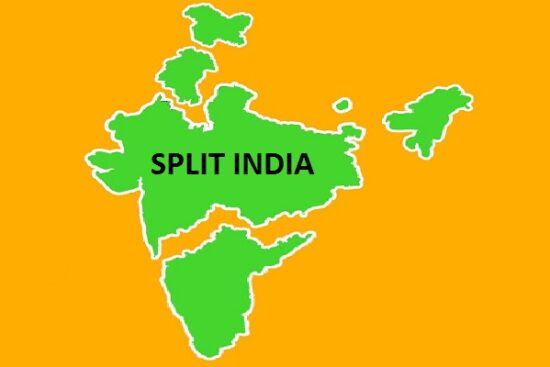
We continue the debate about some of the drivers of populism in contemporary Pakistan, and more broadly elsewhere, to see how uncontrolled and incessant exposure to any form of media, especially the ubiquitous social media networks (SMNs), can subvert minds. Even if the national security lens is taken off, such subversion is commercially driven; politically motivated like propagating a particular narrative about an issue or position; or is inspired by pure hegemony, as India’s many fake SMNs amply demonstrate.
When SMNs are combined with an unregulated AI, the mix is unpredictable, and worrisome for the targeted social strata and humanity, more generally. This scribe wrote about this in the past, and the subject was brilliantly covered in The Express Tribune Sunday Magazine in the article ‘Blind Eye to India’s Disinformation Empire’. Let’s start to deduce some broad SM strands and themes.
First, obsession with current affairs (CA) at the cost of international relations (IR). IR being more permanent has more shelf-value, due to its strong historic, socio-anthropological and politico-economic underpinnings, compared to the changeable CA. Any discussion in contemporary Pakistan on any media is today obsessed with CA, laced with perfunctory premises, and rhetorical point-scoring more concerned with winning the argument, to demonstrate superficial ‘appearance’ of success. Even level-headed and literate Pakistanis are no exception, as most struggle to keep their perspective right. If politics, religion, etc are not placed off-limits in discussions, there are chances that the ensuing discourse would descend into verbal abuse, hardened opinions and lost friendships.
Second, endemic negativity. The incessant SM deluge has created an environment today, where the subverted strata see things in black and white, ignoring to acknowledge the many shades of grey, in a given situation. Today, most if not all, thinking minds see nothing good in Pakistan, the Mumlikat-e-Khudadad.
Ludicrous comparisons are being made on SM with countries, societies and times, that were, and are, far too questionable by our standards. A clever theme in circulation is to write a fictional account of the ‘goodness’ of a bygone era, a long dead leader, or a government organisation, and to compare it with the ostensibly ‘abysmal’ state of affairs today. A senior retired bureaucrat friend recently shared a story on WhatsApp, regarding a one-time Governor of Pakistan and his honest antics…taking ride in a Tonga in small-town central Punjab at midnight after disembarking from a passenger bus alone.
Also Read: A Measured Look: Examining Press Freedom in Pakistan
When questioned as to why the Governor would take a trip alone without the essential staff, in a bus and then a Tonga in the dead of the night in a small town; there was no satisfactory reply. Psychologically, under the feel-good impulse, we tend to believe and share such stories without questioning, inadvertently propagating more negativity about contemporary Pakistan, in our innate desire to get at the current political dispensation, however disliked. This yearning leads to a dangerous psychosis and needs introspection.
Third, ubiquitous criticism, the easy tool for the newly initiated have-nots. The reach and scope of SMN across educational barriers, generational gaps and socio-economic faultiness have empowered the multitude of so-called have-nots with the means to air their opinions (read grievances), propagate (their) preferred version, and occasionally get rich and famous. The lure of being a ‘TikToker’ for many is irresistibly enticing. Most people find criticism, however unsubstantiated, as the easiest and most effective form of content-sharing, because it needs no creativity and least cerebral power. We, due to prolonged exposure to media negativity, have been conditioned to be more receptive to bad news. Just analyse to find out that breaking news on any channel — local or foreign — is 99.9% bad news.
Fourth, complexes at play more openly than ever. Armed with platforms for expression, under deniability, while operating under lax legal framework, any person anywhere can indulge in maligning, character assassination and bad-mouthing anyone, anywhere, anytime. The long-revered leaders are stripped off their clothing in angled content. Organisations are depicted as liability in enormously manipulative sharing. One hates to admit that most of these human-bots do not realise the skillful manipulation of negative content by hostile countries, organisations, and operatives to their advantage. Subversion, unfortunately, has reached alarming levels of acceptability.
Since SM has enabled all sorts of complexes to come out, hence self-styled pseudo experts influence common people, manipulating their demons, in a ‘target-rich’ environment…militarily speaking. Anybody poorly reported upon by a superior while in service; anyone with an out-sized ego, who could not do commensurately well in life; any minion who fell afoul of his superiors for his own shortcomings, can now heap scorn at his/her erstwhile bosses and institutions with impunity, venting out long-suppressed complexes. In most cases, it is deep down a case of sour grapes.
Fifth, a platform and an audience. Most users, otherwise unable to be heard and noticed, now have a platform and an audience. After rattling out litany of complaints, venting out their pent-up frustration, and using their new-found power of exposure to expose ‘others’, these human-bots fail to offer any constructive discourse and alternative. In personal interactions, such influencers succumb to lack of reason and rationale, being the hard part. Most SM users articulate points of view repeating prevalent criticisms, stating oft-repeated arguments and re-packaging known facts. There is hardly anything new in their cut-and-paste iterations.
However, this incessant repetition that helps them live in their make-believe world not only solidifies their own negative outlook bordering radicalism and emotive irrationality, it also poisons the newer entrants and younger SM users, coming of age in this world of SM half-truths, mostly unsupervised and unguided. For most of these new users, without any knowledge database of their own, SM is an online but wayward mentor and tutor.
Sixth, manipulation through AI. The algorithms today control human perceptions, responses, and ultimate outlook. Big data is big daddy, regulating how people should think, perceive, and act. The breadth of AI is increasingly covering preferences, suggestions, and facilitations of choices about all aspects of human life… food, clothing, well-being, living, entertainment, travel, recreation, etc. We are at the cusp of a re-engineered humanity with an unbridgeable gap between the IT-illiterates, and the SM-bots, and between the big data and the natural-ness of human experiences.
Can we draw some perfunctory conclusions from this uncontrolled SM exposure and the possibility of internalising this wave of technology? Next week.
This article is for informational purposes only. Find the original publication here.



















Leave a Reply